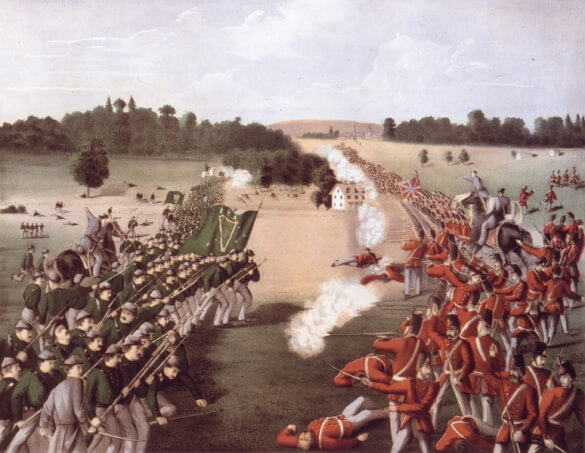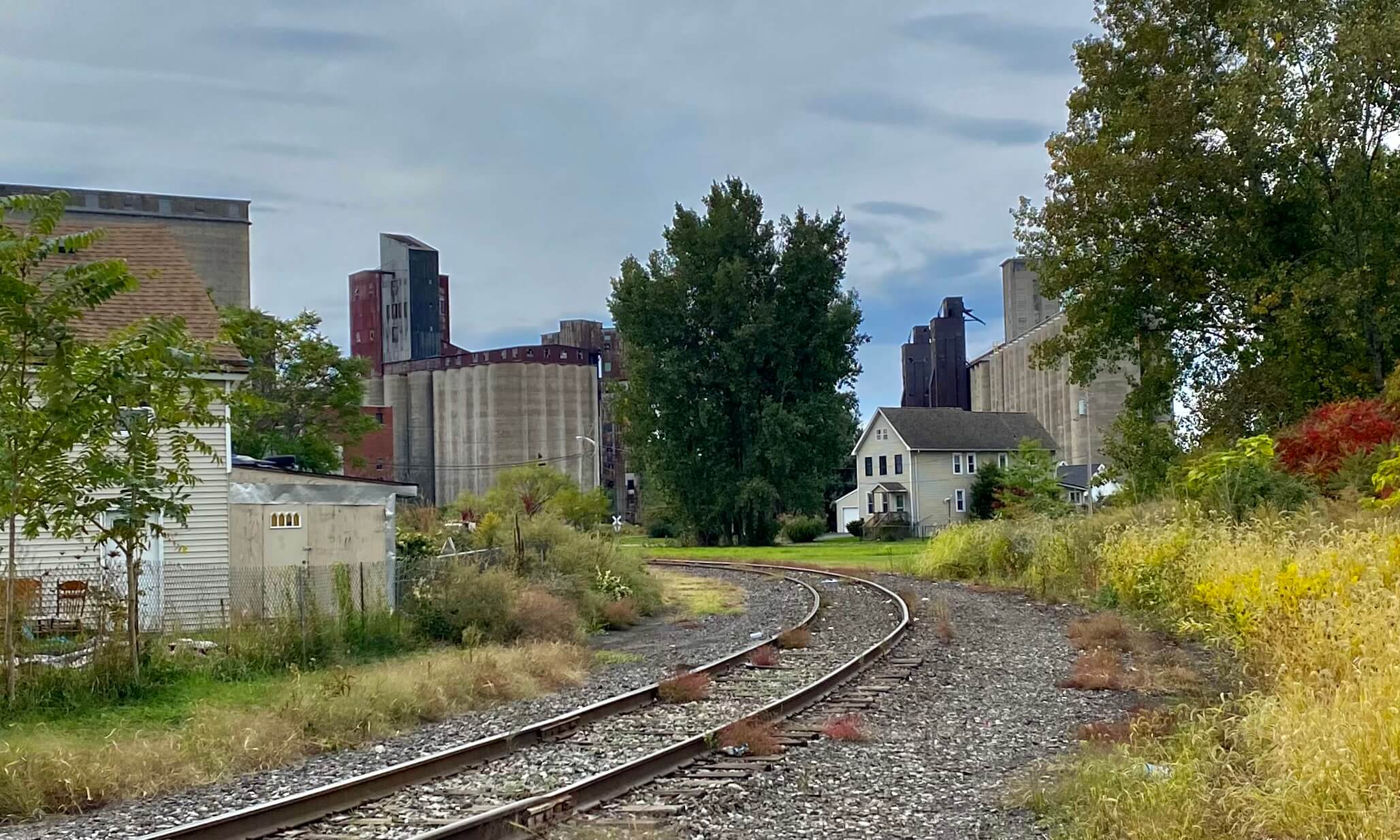The Old First Ward is a neighborhood in Buffalo, NY on the city’s southern edge along the Buffalo River. It has a long and rich cultural history that was shaped by the city’s industrial development and the immigrant communities that settled in the area, particularly those from Ireland and Northern Ireland.
In fact, in the 1800s the neighborhood became known as “the Irish First Ward” because of its large and vibrant Irish population. Today, the Old First Ward is known for its tight-knit community, historic architecture, and thriving Irish-American businesses.
With St. Patrick’s Day coming up, we’re taking a look back at the history of the First Ward and its importance to the Irish community in Buffalo.
First Ward Beginnings
The First Ward was one of the earliest neighborhoods in Buffalo. According to WBFO, in 1832, the First Ward became one of five districts in the city, encompassing nearly the entire waterfront area and becoming the center for Buffalo’s industrial growth.
The Old First Ward attracted many factories and warehouses due to its location on the waterfront near the Erie Canal, which provided easy access to transportation and shipping.
The First Ward’s industrial boom provided job opportunities, which attracted many immigrants to the area, especially those from Ireland escaping the horrors of the Irish Potato Famine. Many Irish immigrants moved to the neighborhood and worked in the First Ward’s breweries and factories, helping to shape the culture of the neighborhood.
The Irish Community of the First Ward
The Irish community has played a significant role in the history of Buffalo since the city was established. Early Irish immigrants helped build the Erie Canal, which was completed in 1825. According to Buffalo Architecture and History, Irish immigrants played a key role in digging the canal and in building the railroads.
More Irish immigrants began arriving in Buffalo in the mid-1800s, in large part spurred by the Irish Potato Famine, a crisis that led to the death of over a million people in Ireland due to starvation and disease. It also led to the mass exodus of Irish people, with more than 1.5 million people leaving Ireland for America from 1845-1855. By the end of that period, more than 10,000 Irish people had settled in Buffalo, according to Buffalo Architecture and History.
Irish immigrants were drawn to Buffalo due to its industrial boom and the promise of employment in its growing manufacturing and transportation industries, such as steelmaking and shipbuilding. The First Ward was located near the harbor and the city’s commercial district, making it a convenient place for workers to live. In addition to its factories, it was also home to many cheap and simple houses, which made it an attractive option for immigrant working-class families.
According to Visit Buffalo Niagara, Irish immigrants living in the First Ward also worked in the nearby grain elevators, which were invented in Buffalo in the 1840s and helped make the city one of the biggest grain ports in the world. The back-breaking work involved hauling burlap sacks by hand, with work taking as long as seven 12-hour work days to unload one boat, according to WBFO.

Struggles & Power For the First Ward
Life in the First Ward was not without its challenges for Irish immigrants, however. According to Buffalo Architecture and History, Irish immigrants mainly lived in poor, run-down shanties, making them susceptible to disease. When cholera struck in 1849, about 90% of the 877 dead were foreign-born laborers, mostly Irish.
In addition to disease and difficult hard labor for low wages, Irish immigrants had to endure social hardships in America. In the late 1800s and early 1900s, the Irish community in Buffalo faced discrimination and political exclusion. Irish immigrants, most of whom were Catholic, were often viewed with suspicion by the city’s predominantly Protestant population and were frequently denied access to jobs and political power.
With its large Irish population, the First Ward neighborhood provided a safe, welcoming haven for Irish immigrants who had migrated to Buffalo. The close-knit community helped make the city feel like home and provided a cultural center. Within the First Ward, the Irish community founded their own churches, social clubs, and political organizations.
Over time, the Irish community in Buffalo gained greater acceptance and integration into the city’s broader society. In fact, the First Ward became an important center of political power in Buffalo, and many Irish-Americans from the neighborhood held prominent positions in local and state government.
One of the most famous political figures from the First Ward was William “Fingy” Conners, who eventually became one of the wealthiest men in the city’s history, according to WGRZ. Conners was born in the First Ward in 1857 and gained power and money by becoming a labor contractor on Buffalo’s docks and silos. His wealth led him to wield significant political power within the city, with particular influence over the Buffalo Police Department, judges and politicians. He eventually rose to the role of State Democratic Chairman.
First Ward’s Role in the Fenian Raids
The First Ward is also known for being a hub for the planning and development of the Fenian Invasion, an attempt by Irish-Americans to conquer Canada and exchange it with Great Britain for Irish independence, according to Encyclopedia Britannica.
According to WBFO, in May 1866, hundreds of Irish-American Civil War veterans gathered secretly in Buffalo to carry out an armed invasion of the Niagara Peninsula. They formed a secret society called the Fenian Brotherhood.

Many of these soldiers lived in Buffalo’s First Ward, and historical accounts say that the Fenians stored their guns in the basement of St. Bridget’s Church in the First Ward as well as in taverns and saloons. According to Buffalo Architecture and History, memoirs claim that “wagon loads of arms and ammunition were assembled in the First Ward” in preparation for the Fenian Raids.
The Fenians’ mission was to take Fort Erie and then take control of the Welland Canal to disrupt British troop movements between Eastern and Western Canada, according to Buffalo Architecture and History. The raids were unsuccessful, and the Fenians were forced to retreat in June 1866. It was made clear, however, that the strong Irish community of the First Ward had created a hub for Irish immigrants seeking independence, and the group was gaining political and social influence within the city and country as a whole.
The First Ward Today
As Buffalo’s economy shifted away from heavy industry in the 20th century, the Old First Ward underwent significant changes.
According to WBFO, many historians believe the opening of the Saint Lawrence Seaway allowed industries to bypass Buffalo. This led to the closure of many factories and businesses, which caused the neighborhood to fall into decline as job opportunities dried up.
In recent years, however, there has been a resurgence of interest in the area, with new businesses and residents moving into the neighborhood along the waterfront, and several events and parades taking place each year.

The neighborhood is home to several locally-owned Irish-themed bars and restaurants, including Gene McCarthy’s, a pub that’s been serving locals for over half a century, as well as Swannie House, a tavern first established in 1886 that served sailors when the area was known as the third-largest seaport in the world, according to Step Out Buffalo.


 Fair Housing Notice
Fair Housing Notice 